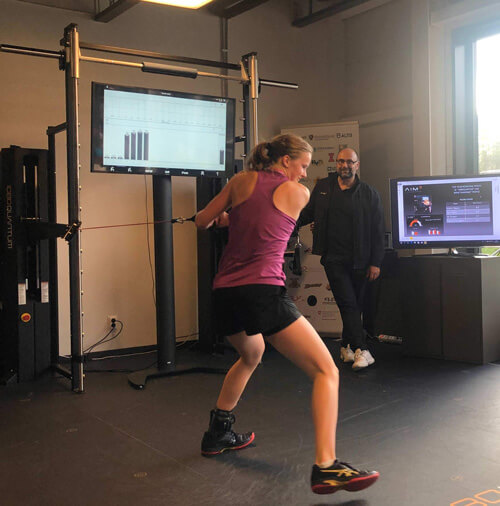In the world of youth athletics, the word “great” often describes what is, in fact, much closer to ordinary. Great job, great practice, great effort out there. As the Technical Director and co-founder of the Good to Great Tennis Academy in Stockholm, Sweden, Magnus Norman knows firsthand what separates the great from the pretty good. In his own injury-shortened career, Norman ascended to a #2 ATP world ranking and competed in the final of the 2000 French Open; as a coach, he steered Stan Wawrinka to a late-career breakthrough that included wins in the Australian Open (2014), French Open (2015), and US Open (2016).
Along with a staff of 13 tennis coaches and 4 fitness coaches, Norman and the Good to Great Academy have set out to develop the next generation of top players, seeking to ensure Sweden’s place as a consistent world tennis power. At the youth level, in order to cultivate players capable of greatness on the court, first they need the foundation of athleticism to support those lofty goals.
[av_button_big label=’More tennis:’ description_pos=’below’ link=’manually, https://1080motion.com/robert-lindstedt-tennis-1080-quantum/’ link_target=” icon_select=’no’ icon=’ue800′ font=’entypo-fontello’ custom_font=’#ffffff’ color=’theme-color’ custom_bg=’#444444′ color_hover=’theme-color-subtle’ custom_bg_hover=’#444444′ av_uid=’av-154cfr9′]Robert Lindstedt plays tennis’ shift towards age, physicality to his advantage[/av_button_big]
“When they are 15 or 16 they start to develop their own style, their own way of playing,” Norman says. “But in the beginning, when they are 12- to 14-years-old, it’s more general. At those ages, we’re trying more to build the athlete before building the tennis player.”
Practice with Purpose
With young players, few factors influence performance outcomes more directly than intent. A proper harnessing of focus, will, and kinetic energy can materially change the result of any sports action, be it a swing, shot, kick, throw, or tackle. In his initial assessment of “talent,” Norman focuses as much on this mental side of the game as the physical.
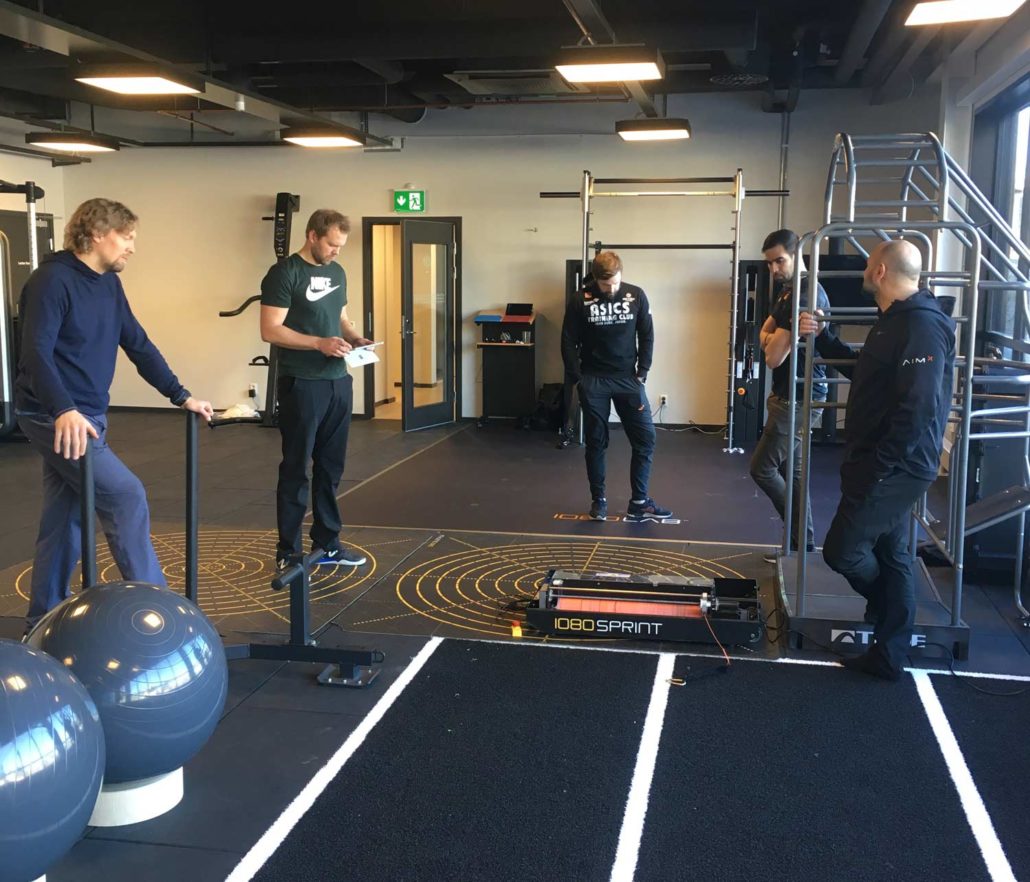
“Talent for me is the hunger in the eyes, the ability to learn, the ability to listen and respect fellow players and their coaches,” Norman says. “You can be very skillful with your hands and you can be very good when you’re 12, 13, 14 just because you’ve played a lot and are very skillful, but for us it’s very important that we have a good group here because we believe that environment can make a big difference.”
At Good to Great, the tennis and fitness coaches classify their training weeks into three specific purposes in order to provide a clarity of intent:
1. Base Week—A regular training week combining tennis and fitness. Fewer demands put on the lower body at the beginning of the week to maintain freshness, with a heavier load put on the legs towards the end of the week.
2. Tournament Preparation Week—A week leading up to competition. Includes an upper and lower body focus, with sprinting, jumping, and any qualities requiring more recovery planned at the beginning of the week. Later in the week a focus almost exclusively on tennis specific drills with shorter durations.
3. Fitness Week—A week with double fitness sessions. The athletes may touch the ball for an hour a day, but the main focus is fitness and developing essential physical qualities of strength, speed, power, and mobility.
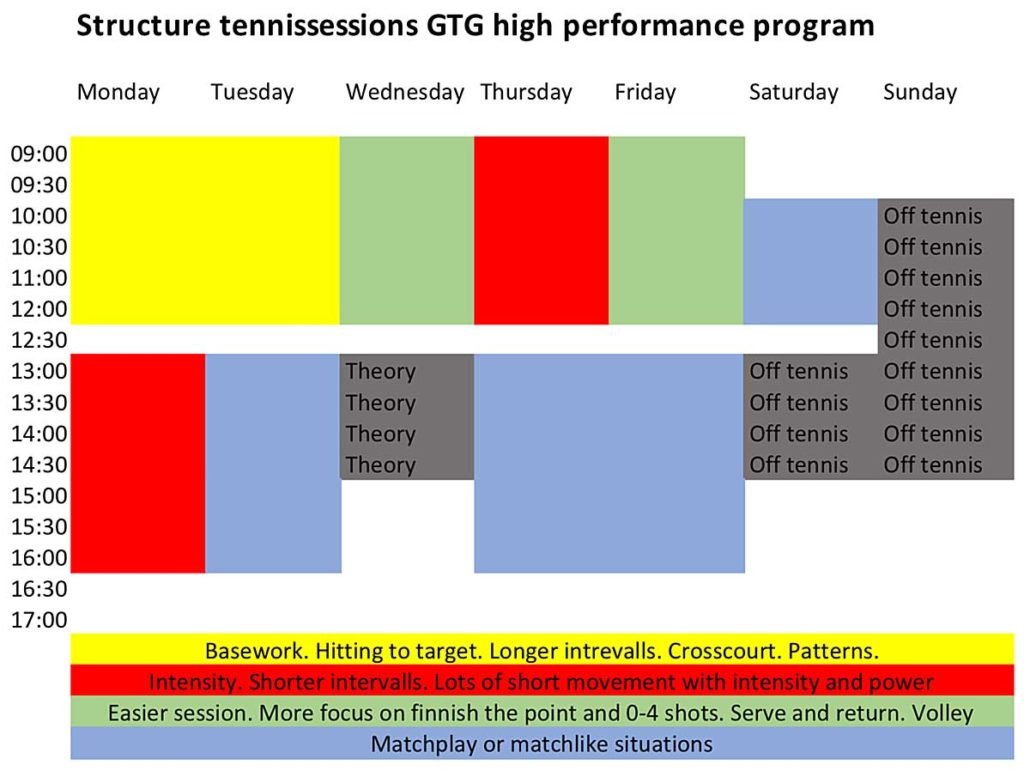

“It’s very tough in tennis because it’s a repetitive sport and you need to be on the court a lot,” Norman says, discussing the balance of training priorities that the academy’s tennis and fitness coaches work together to achieve. “You need to serve a lot and play a lot of forehands and backhands, and then you need to run fast. You look at the chronic load, and it’s very demanding.”
Applying Specificity in Training
Just as the Good to Great team breaks their training weeks into three primary goals, they’ve also identified a trio of tennis-specific qualities they strive to test and train during the designated “fitness” weeks:
1. Movement
2. Serving speed
3. Rotational power.
“We test for mobility and power in the serve, we test for rotational ability—how far you can rotate and how much power you have when you rotate—and also of course movement, where we also test conditioning with what we call power endurance,” Norman says.
In hands-on terms, this involves performing a needs analysis and recognizing the limiting factors in each player’s game. From there, the team at Good to Great can individualize training to each athlete.
“I was working with a young female player along with one of our fitness coaches, Ali Ghelem, and we were testing lateral movement going to her right (or forehand) side, because she was right-handed,” Norman says, describing how he combines his coaching eye with objective data. “I felt she was moving slower to her forehand, so we went onto the 1080 Sprint and we started to test both sides—we actually found out that she was definitely slower to the forehand side. So this was me having a feeling, then talking to the fitness coach, then testing with 1080 Sprint.”
From there, Norman and Ghelem programmed movement-based training with a greater focus on developing flexibility in the player’s left hip, which was determined as a factor compromising her acceleration to the right side. With several months of training dedicated to shoring up this weakness, the athlete eliminated that hole in her game and greater success on the court followed.
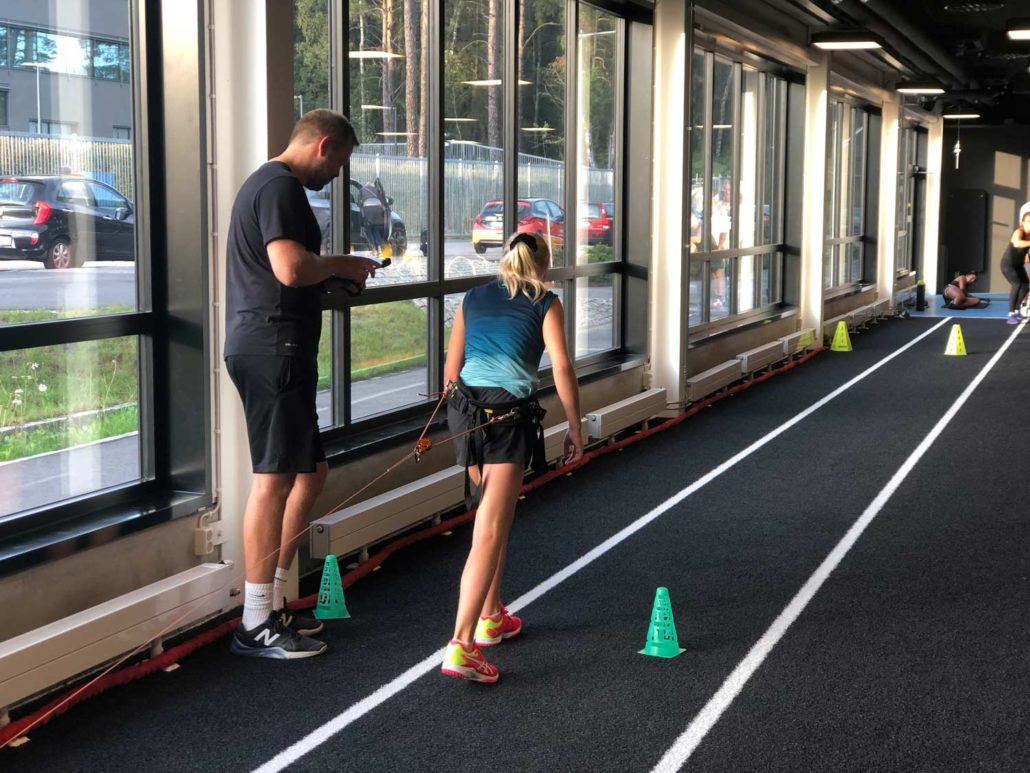
In addition to testing power and movement with 1080 Sprint to individualize training, the academy also uses the resistance settings to train fundamentals of acceleration, backpedaling, and change of direction.
“In a small group with 3-4 players, it’s very easy to put the waist strap on and take it off again. So we’ll do resisted sprinting for, let’s say, 30 meters, and then you unstrap, let the 1080 retract the cable, and within a couple of seconds the next athlete can put it on and go again,” Norman says. “Also, with tennis it is important to be able to move backwards. So with 1080 Sprint we can work on moving backwards and the shuffling technique that you need to be able to do going backwards. In tennis you move side-to-side, you move forward, and then all of a sudden you move backwards instead of turning and turning your back on the net—that’s an important area where we’ve been able to use the 1080 Sprint.”
Communication and the “Why”
In team sports, communication is an essential skill and often a determining factor in wins and losses. Though working in an individual sport, the collective at the Good to Great Academy embodies that team-directed mode of communication in order to keep everyone on the same page and moving in the right direction.
“We try to have all the fitness coaches on the tennis court, so all the fitness coaches should be on the tennis court for 2 hours per week,” Norman says. “We think that’s important for them to be speaking to the tennis coaches and looking at the actual sport that they are training for. And I also want the tennis coaches to be in the gym sometimes to see what the fitness coaches are doing to get an understanding of what we are doing there.”
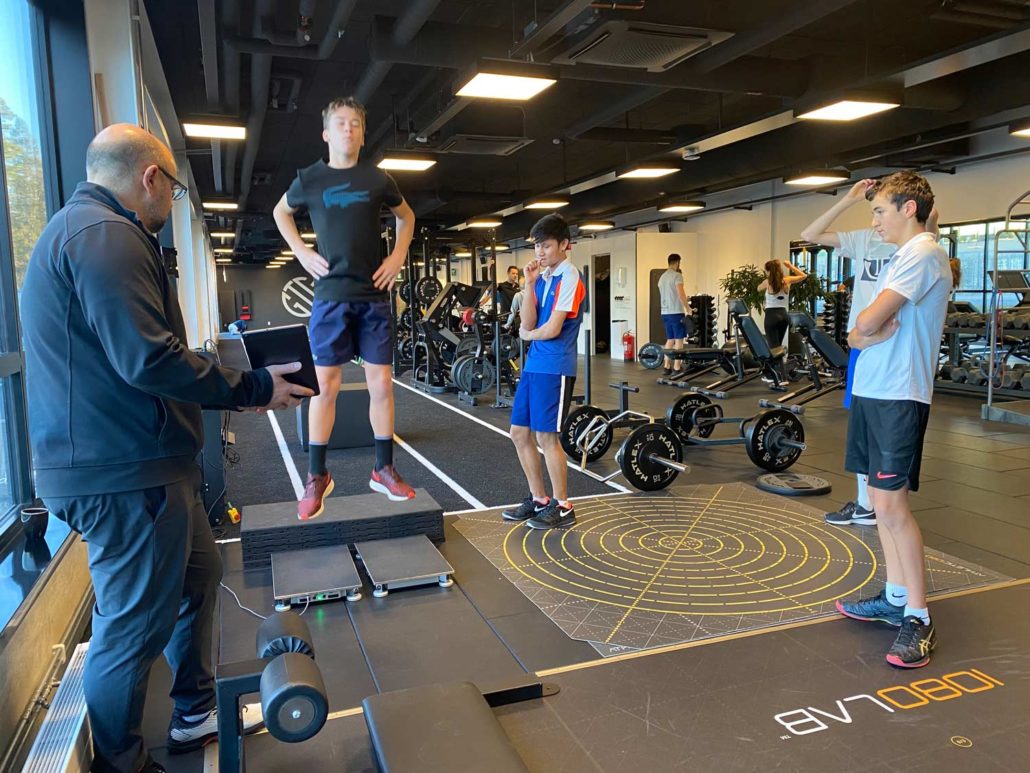
“That’s the tough part sometimes,” Norman concedes. “To get the medical team involved, to get the mental coach involved, to get everybody speaking the same language. That’s my job at the academy, because I’m involved in all the different areas and I’m very interested in all the different areas. I try to get everyone to buy-in on what we are doing, speak the same language, share information, and communicate.”
Objective data is one form of language that each performance department can share. Good to Great collects and manages athlete data in the form of acute and chronic training loads, readiness numbers, sleep scores, fitness and mobility testing, and more. In addition to forming the foundation of communication within the coaching staff, this data also opens avenues of communication between the coaches and their players.
At least three times a year, the tennis coach, fitness coach, and athlete meet in order to discuss evaluations, findings from the data, and the why behind the long term development process.
“We don’t talk so much about winning, we talk instead about the why,” Norman says. “Why they are having a good period, so we can try to learn from winning. And we also try to learn from losing. Losing is a great way of learning. For me, looking at the players who have gone from 12-13-years-old to among the top 100 players in the world, they have had this ability to learn from their losses. They never lose motivation when they lose, they go out and they work even harder.”
[av_button_big label=’Next post:’ description_pos=’below’ link=’manually, https://1080motion.com/1080-in-session-estimate-1-repetition-maximum/’ link_target=” icon_select=’no’ icon=’ue800′ font=’entypo-fontello’ custom_font=’#ffffff’ color=’theme-color’ custom_bg=’#444444′ color_hover=’theme-color-subtle’ custom_bg_hover=’#444444′ av_uid=’av-pu1hkj’]1080 In Session #2: Measure Max Force and Estimate 1 Repetition Maximum[/av_button_big]
Along with this resilience, Norman has also found that the best players he coaches ask a lot of questions and bring their own input into training. That internal, self-directed quality is critical—once they hit the court, the players need to make their own decisions and command the tactical and strategic side of their game.
“The best feeling for me as a coach is when it comes from the player,” says Norman. “We can guide them in the right direction, but they have to find out what’s around the corner, they have to be eager to learn. At the end of the day it’s great to have good hands and it’s great to be skillful, but you have to have this inner-drive to make it, because it’s a long journey and it has to come from within.”
